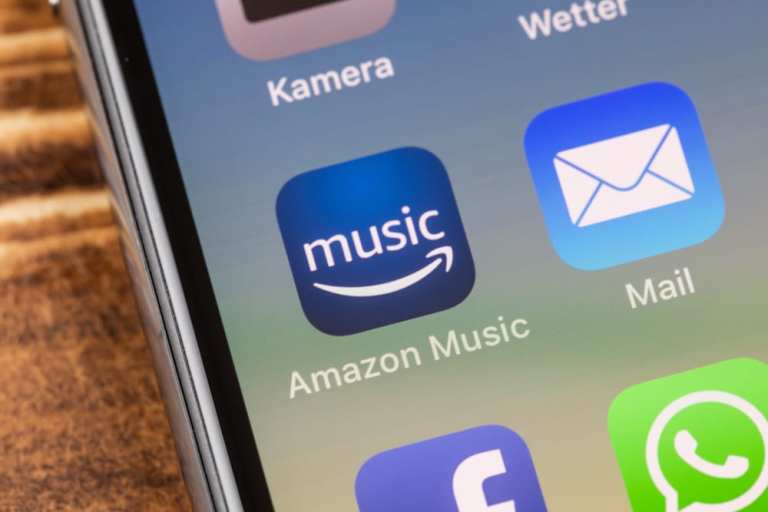It was a good week for Amazon’s stock price, with a valuation that briefly exceeded $1 trillion before falling back into the far more conservative $927 billion range, reaffirming its membership in the trillion-dollar club along with Microsoft ($1.27 trillion market value), Apple ($1.38 trillion market value) and Alphabet (an approximately $1 trillion market value), according to CNBC. Amazon made its first cross into 13-digit territory last fall, and this week’s excursion marks its first of 2020.
But probably not its last, given the speed of the race for the consumer’s whole paycheck this week.
That ongoing competition between Amazon and Walmart expanded into a few new fronts this week – from streamed digital airwaves to employees’ literal paychecks to the POS itself, as Amazon and Walmart both got busy tossing out new innovations and ideas to the markets they hope to capture.
And while not all the news was progress-oriented (Walmart announced a big departure for its employee roster), there was no shortage of things to watch.
Amazon
Big Play of the Week: Wave to Pay Coming Soon (Maybe)
Advertisement: Scroll to Continue
Rumors of Amazon entering the market using the human hand as a payments form factor first emerged in late 2019, when news reports and a patent filing alerted watchers that something might be afoot. Those rumors got a good deal louder last week.
According to reports across media, Amazon is developing a handprint payments/authentication system – but not just for use at its own Whole Foods and Amazon Go locations. No, Amazon is thinking big, developing terminals that could work at the POS at coffee shops, QSRs and anywhere else consumers routinely transact and might like to be able to pay with a wave.
How exactly that hand-scanning technology will operate is still being determined. Some reports indicate that it would be a contact-based system – customers would have to actually lay their hands on a scanner. Newer reports confirmed by anonymous sources this week indicate that direct contact will only be necessary on the first use, and after that a waving gesture at the terminal would be sufficient to pay.
The same sources also indicate that Amazon is already working with payments industry partners to make its industry-wide push viable. Reports indicate the eCommerce company has already started working with Visa to test transactions on the terminals, and is in ongoing conversations with Mastercard to do the same. The firm has also reportedly been in discussions with some of the largest U.S. card issuers to get the project off the ground. JPMorgan Chase & Co., Wells Fargo & Co. and Synchrony Financial have all expressed interest in enabling their customer card accounts to work with the emerging tech, according to sources. The main concerns are around security, particularly the worry that bad actors will attach stolen card data to their handprints.
The big question mark about the tech is how many physical merchants will be interested in having Amazon drop a piece of POS technology into their shops – and snap up all kinds of consumer data while they’re at it. There has been a historical reticence among retailers about allowing the Amazon fox into their henhouse. That reticence can be overcome by overwhelming consumer demand – but it remains to be seen whether consumers are ready to ditch the card when it comes to payments and talk to (or, more accurately, with) the hand instead.
Sweet Sounds of Unexpected Success: Amazon’s Streaming Music Surge
While not as big a name in music streaming as Apple or Spotify, Amazon Music has steadily been developing a user base since its 2016 launch. Although it was later to the market, the service has now passed the 55-million-user mark, putting it closer to Apple than ever before.
Amazon Music offers six price tiers, ranging from a free service to a premium, but the company said that “nearly all” of its users are paid subscribers.
“Amazon doesn’t talk numbers that much,” said Steve Boom, head of Amazon Music. “We felt like getting to this level of scale was something worth talking about.”
As of last summer, Apple Music reported 60 million subscribers, while No. 1 Spotify has 113 million paying subscribers and about 248 million users.
Amazon has also been competing with a lower price point, charging $8 per month for Prime members and $4 for people who listen on an Echo. Subscriptions in the service grew 50 percent in 2019, the company said.
And speaking of growth in expected places….
Walmart
Big News of the Week: Piloting Better Pay for New Employees
Though there is no shortage of recession worries out there right now, the economy remains strong for the time being, with a high share of workforce participation. That means labor has become a competitive commodity for retailers and other employers, as these days, it is not only hard to find good help, but it’s hard to hold onto it.
Perhaps that is why reports are emerging that Walmart is testing an increase of its minimum wage for certain jobs in 500 or so of its stores nationwide, as part of the rollout of a new operating model called the “Great Workplace.” Some associates – including cashiers, shelf stockers and deli workers – will see their hourly pay rise from $11 to $12, according to Walmart spokeswoman Jami Lamontagne.
The wage hike is just a test, she noted, and is not currently planned to expand to Walmart’s 1.5 million U.S. employees – the nation’s largest private workforce. But it could be a sign that Walmart is again considering raising its wages, which last occurred in 2018.
“We are really excited about our test, which further empowers our associates to take care of customers,” Drew Holler, senior vice president of associate experience, said by email of the Great Workplace initiative. “Finding new ways to pay and recognize our associates has been part of tests, and this is the next step. Our associates are enjoying learning new skills and working on small teams within their store.”
Big Departure of the Week: Walmart’s Chief Merchant to Step Down
As part of management team changes planned for the post-holiday period, Walmart’s Chief Merchant Steve Bratspies is leaving, according to an internal memo sent to Walmart workers by U.S. CEO John Furner.
Bratspies will be replaced by Scott McCall, who was formerly the head of entertainment, toys and seasonal at the retail giant.
“I am incredibly proud of what we have accomplished as a team,” Bratspies said. “I will always cherish my Walmart family and take pride in the growth we fueled together, but it’s time for a new challenge. I am excited about what’s ahead for me and for Walmart.”
Furner’s move to the U.S. CEO role is also part of the management changes; he was formerly the CEO of Sam’s Club
Ashley Buchanan, chief merchant for Walmart’s U.S. eCommerce business, departed last month to become the new CEO of craft outfit Michael’s.
“These moves demonstrate the depth of talent in our business and the opportunity for advancement at Walmart,” Furner said.
Walmart hasn’t yet revealed how it did over the holidays, although various physical retailers have logged misses, including a surprise underperformance from rival Target. Amazon, for its part, said the holiday season was record-breaking, although it hasn’t yet revealed official figures.
The National Retail Federation (NRF) said holiday sales were up 4.1 percent throughout the industry. Walmart will report its fourth-quarter earnings next month. How its new executive leadership team will fare in rebuilding efforts to capture the consumer’s whole paycheck after a miss on earnings – or building a track record of success – remains to be seen.
Come February, the earnings reports will all be out, and the real state of the 2020 race will become public record. Stay tuned, and we’ll keep watching to keep you updated.




